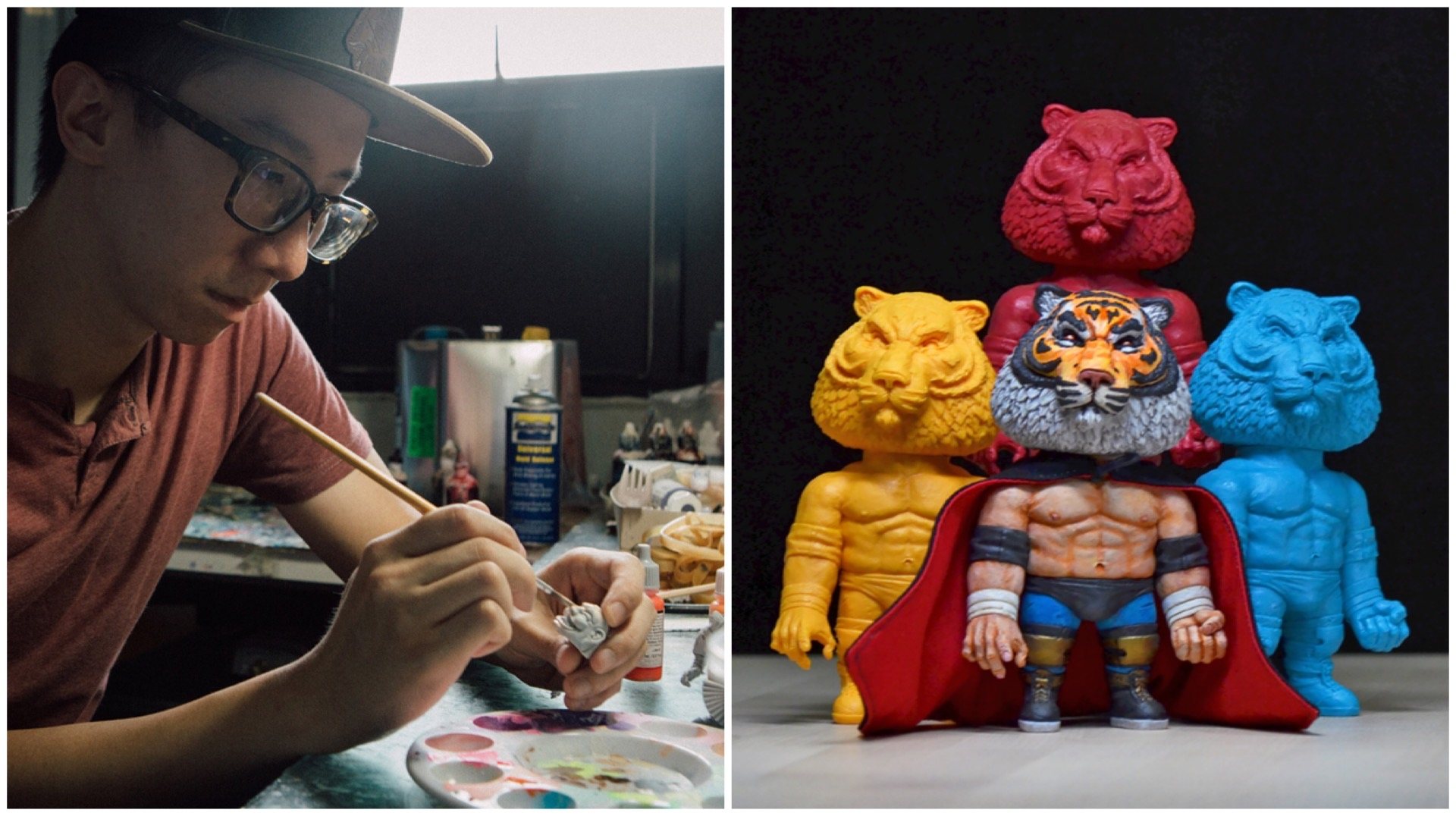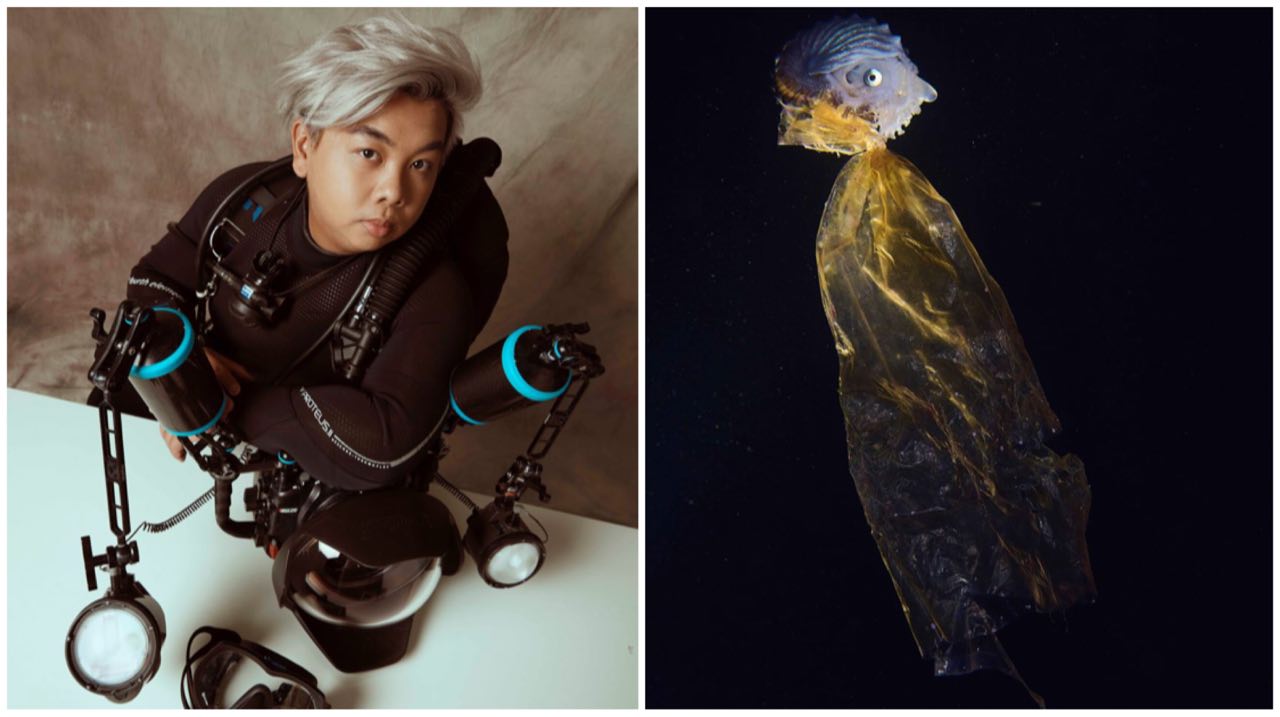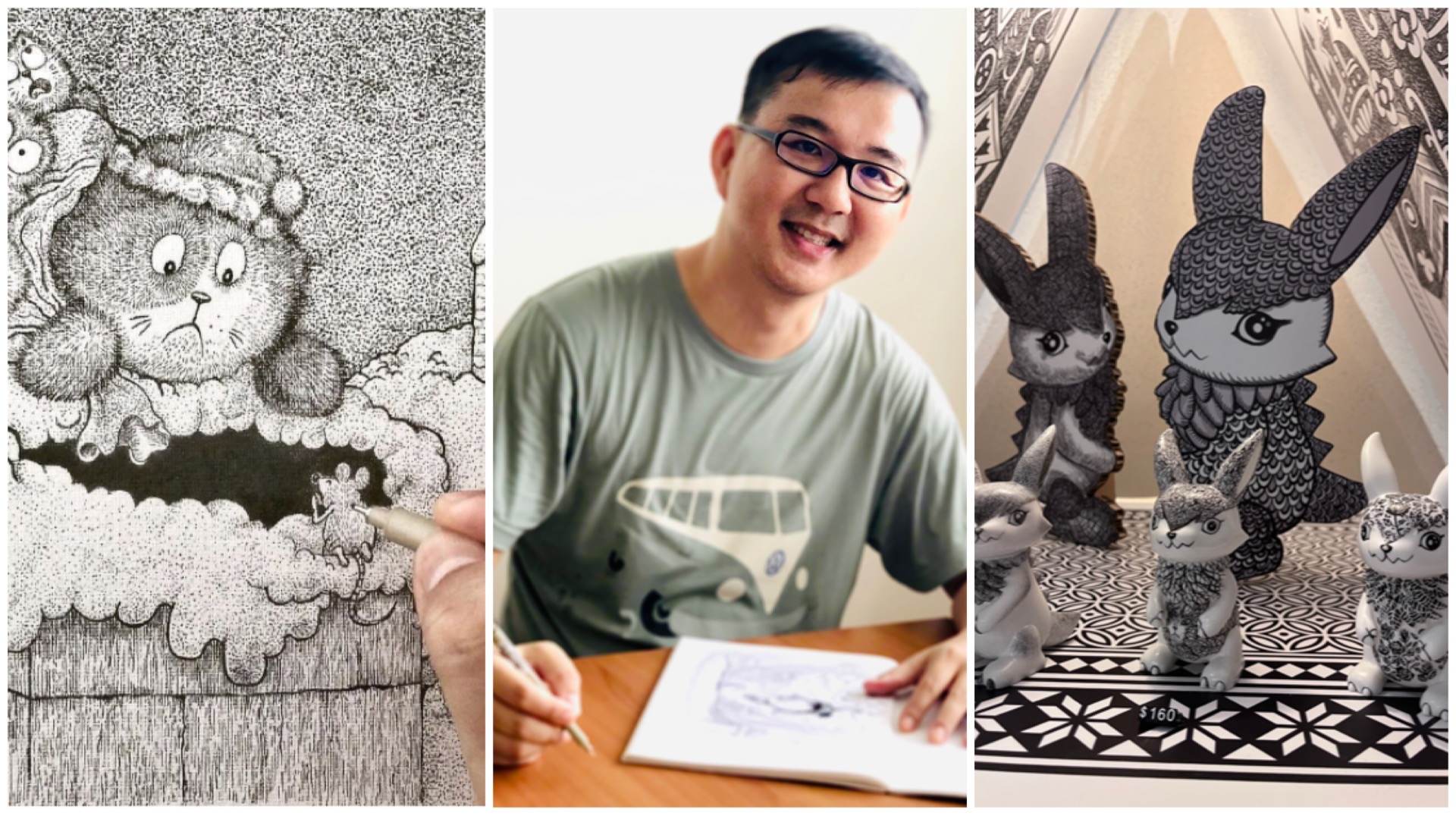Artist Behind The Art: No Figures Of His Fave Characters, So He Made Them
Remember what the world was like before social media and the Internet, when toys and figurines acted as a form of escapism for generations of children and older collectors alike?
Daniel Yu does.
The toys that this 80s kid played with served as a magical portal into the pop culture of that time. It ignited his imagination and passion so much so that he became a self-taught artist and independent toymaker working primarily in the mediums of clay and resin.
Today, the 36-year-old business management graduate from Singapore Management University combines local tradition and pop culture ephemera in his works which have gained a cult following in both the local as well as international scenes.
His latest creation, Shining Wizard, is currently on display at BERNINA within Funan as part of the shopping mall's "Creative Intersections" project held in conjunction with the Lunar New Year.
"For Creative Intersections, Chan + Hori Contemporary brought together 15 artist and brand collaborations to respond to the Year of the Tiger, and, in particular, Singapore's connection to tigers through history, mythology, pop culture and so forth," says project curator Deborah Lim.
"We brought together creatives - from fashion designers to poets, visual artists to independent toymakers such as Daniel Yu - for this initiative to bring art into a public sphere through personal encounters."
We caught up with Daniel to learn more about his latest figurine series and how it was inspired by... pro wrestling?
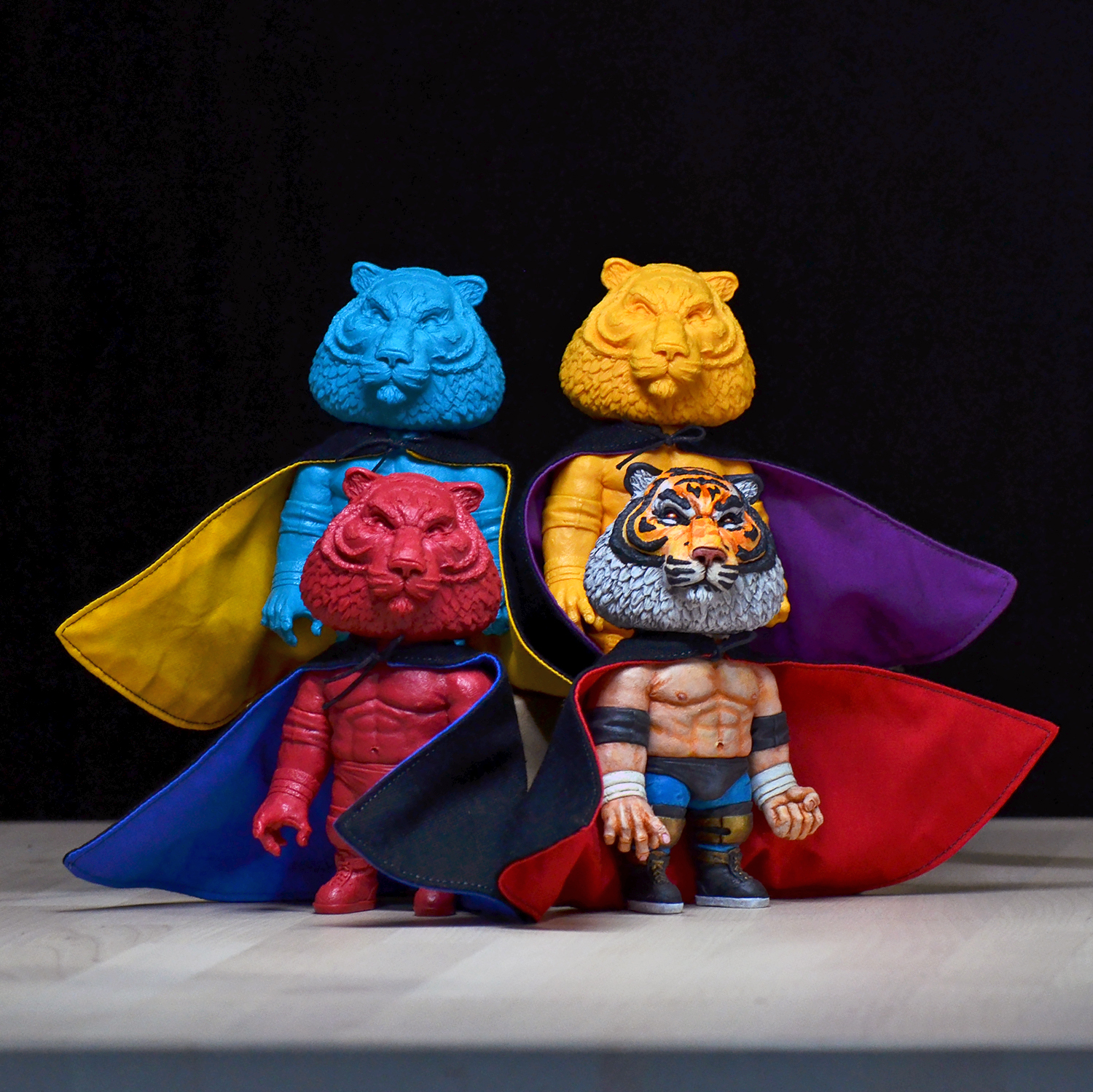
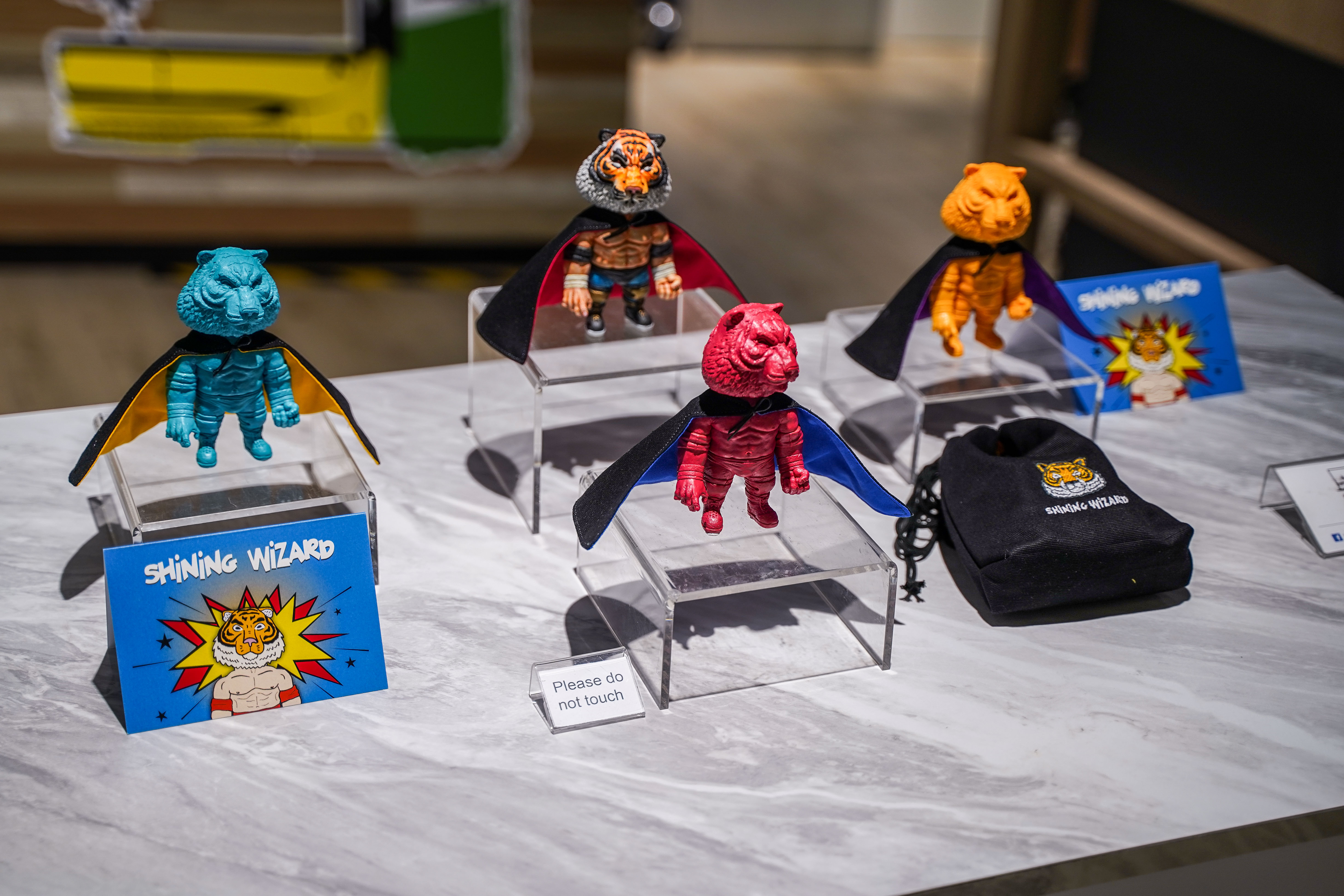
Tell us about your roar-some collab with Funan!
Chan+Hori Contemporary approached me for "Creative Intersections: In the Year of The Tiger". I was immediately drawn to the tiger narrative and the collaborative nature of bringing artists and brands together.
The tiger - majestic and regal - has been shaped by our imagination through years of folklore, mythology and popular culture. I was compelled to create something that evoked all these qualities, with a contemporary spin to it.
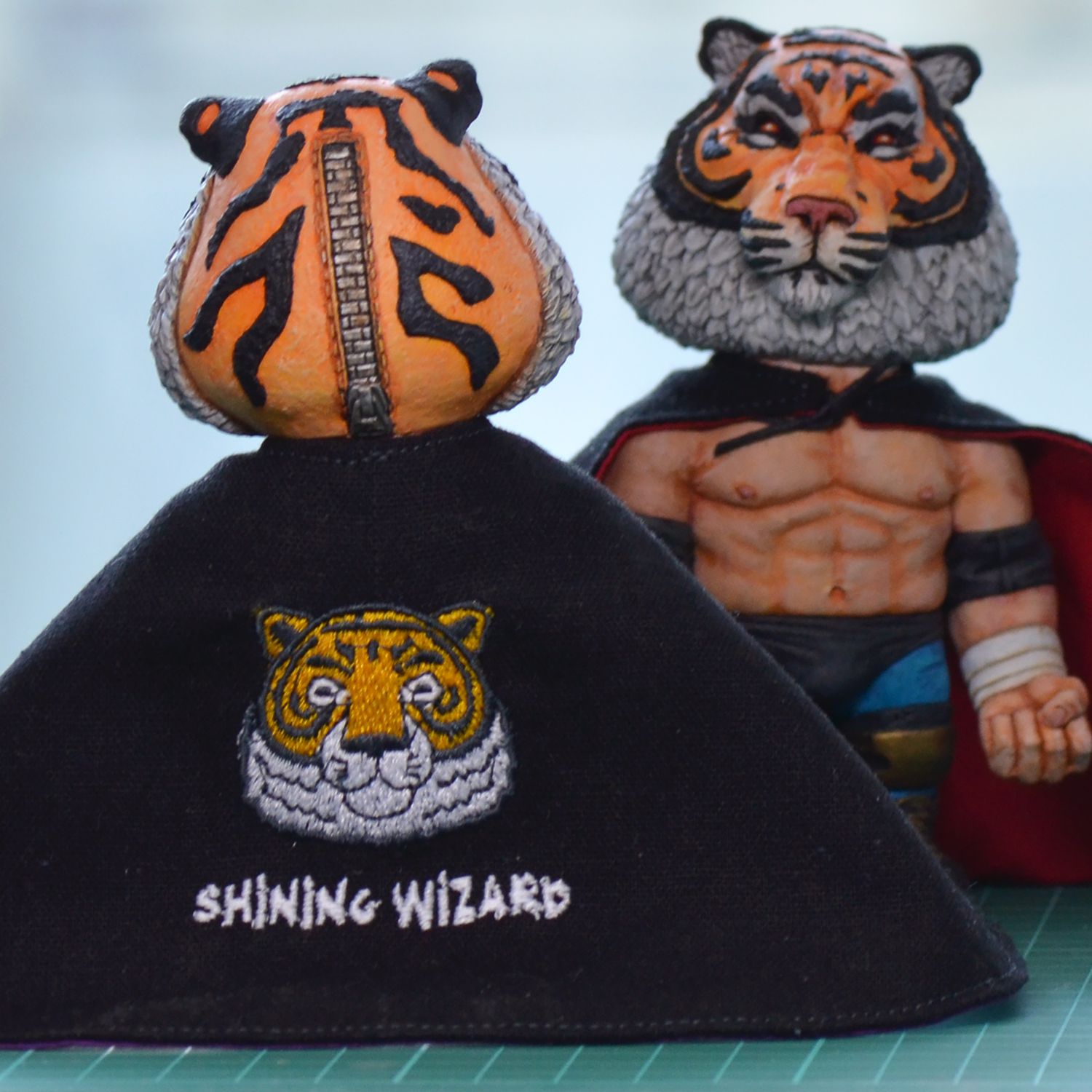
We're big fans of pro wrestling, and we hear you are too! How did your love of wrestling influence your creation of Shining Wizard?
I came up with the character Shining Wizard (named after a wrestling move), a professional wrestler that dons a sacred tiger mask and is imbued with the spirit of the ferocious beast.
I grew up in an era when wrestlers were as close to real-life superheroes as you could get - athletes in a high-action theatrical soap opera that you could watch on TV every week. Many of them looked like they had stepped right out of the pages of a comic book - outrageous personalities, flamboyant ring gear and chiselled physiques.
I was particularly fascinated with masked wrestlers. They carried around an aura of mystery and intrigue that made them even more appealing. Oftentimes, their masks had elements of animals or symbolic references that labeled them either a good guy or bad guy. The wrestlers would channel the identities of the masks they wore during their performances.
The Shining Wizard is an embodiment of that particular genre in professional wrestling.
The character also draws references to a wrestler called Tiger Mask, who, incidentally, was inspired by a Japanese manga and anime series in the 70s of the same name.
Tell us about how your love for toys and action figurines began.
As a kid, I played with toys - and that progressed to collecting them, which eventually led to wanting to make my own. My first interaction with sculpture was in the form of toys and action figures. I liked their tactile nature, how you could pick them up with your hands, feel and pose them.
Being able to look at [an action figure] from all angles - it’s a sensory exploration of discovering all the different details and textures that the sculptor meticulously created, even if it’s a child’s plaything.
What were some of your favourite action figures growing up?
Growing up in the late 80s and early 90s, pop culture was a very prominent part of those years for me. Ninja Turtles, Ghostbusters and pro wrestling were my staple TV viewing, and along with that came the action figures too.
I remember having a Ninja Turtle figure that I carried around with me everywhere. It even had my initials written on the bottom of it’s feet so I’d never lose it.
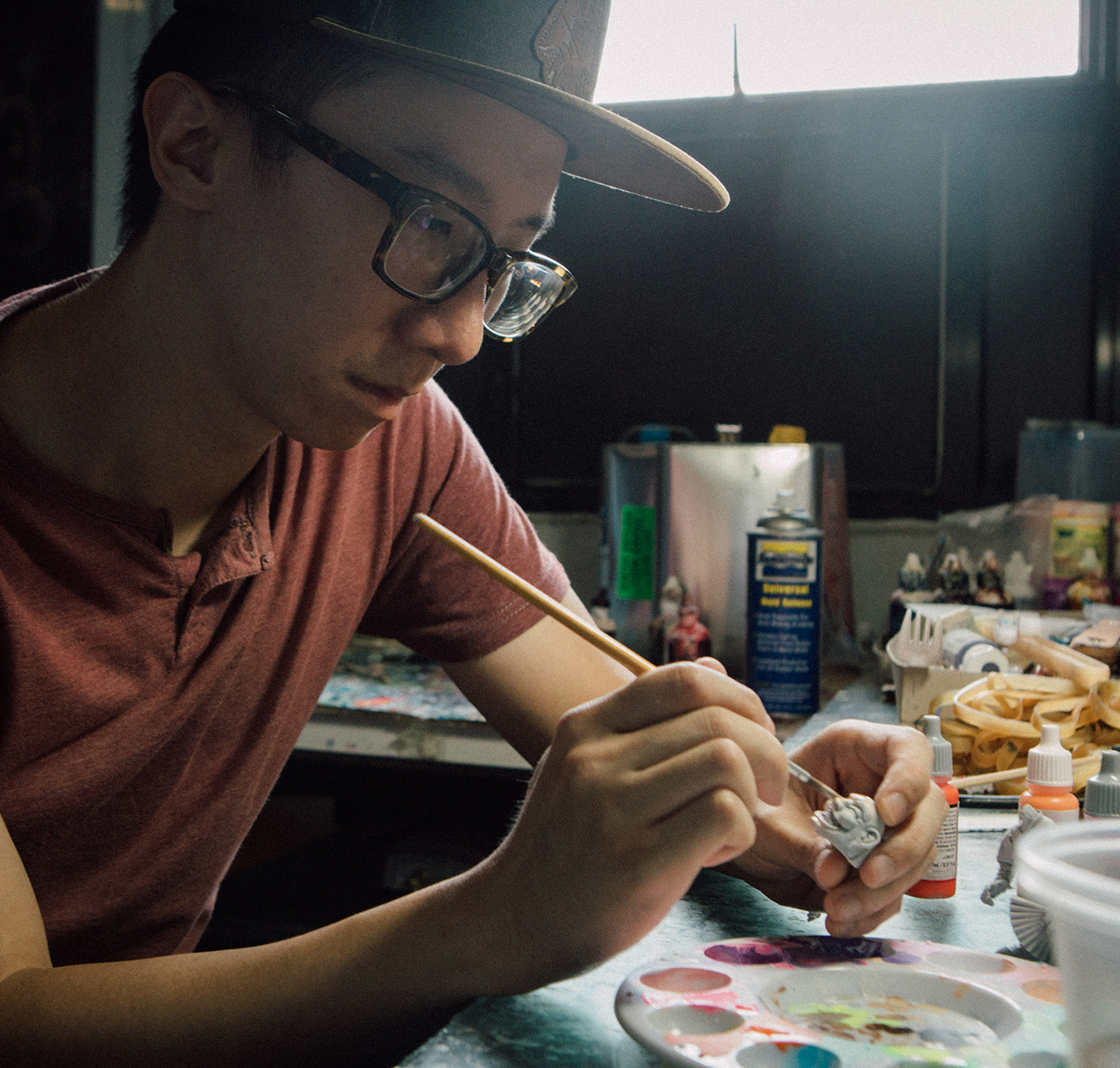
What made you decide to parlay that interest into a full-fledged career as a toymaker?
It first started out with wanting certain characters from my favourite shows that the toy companies hadn’t produced. I decided to make them myself. At first, it was learning how to take the figures apart, interchanging limbs between toys and painting them to look different. As I progressed, I learnt how to sculpt as well.
Around the time I was 16, I would post my creations on online message boards and forums, where communities of like-minded creators and customisers would gather and share their work. I even sold a few of my pieces through those platforms. I think it was around that point that I made a mental note that perhaps this was something that could be explored further.
Over the years, creating was a hobby for me in some capacity or another, but I wanted to try and make something more out of it. I applied for two artist apprenticeships - one with the National Arts Council (NAC), and one with local artist collective PHUNK.
These mentorships played a big part in getting my proverbial feet wet in the local creative scene. Around that period, I also won the NOISE artist of the year award, an initiative by NAC, which included a $5,000 grant. The sum of all these gave me the courage to dive head first into becoming a full-fledged maker and creator - and I haven't looked back since.
What are the challenges of using resin, and what do you enjoy about it?
Resin is a type of plastic and is an accessible medium for sculpture and toy production. There is certainly a learning curve to it; getting the hang of mould-making to replicate your sculpture, understanding technical aspects such as viscosity and cure time to minimise imperfections in production.
These are some of the things that make resin casting an art of it’s own. I like resin for its ability to retain intricate sculptural detail.
What creations are you proudest of?
I don’t really have favourites, I enjoy the process of creating the most. From conceptualising, to [doing] the research, through to sculpting and painting.
The journey is as important as the final creation itself. But if I had to choose, some of the past work I’m proudest of include the Lunar Beast (above), Bird Shaman and Mumbles (below).
What advice would you give someone who would like to venture into toy making in terms of how to start and where to go to work on their craft?
The World Wide Web is a great place to start - there are many communities across multiple platforms that provide guides, tutorials and spaces to showcase your work.
If you feel you have something that needs to be expressed creatively, just start making the work! If that means taking the leap to become a full-time maker, that’s great. If that means doing it on the side as a passion project, that’s great too.
It's important that you enjoy the process and do what works for you.
For the latest updates on Wonderwall.sg, be sure to follow us on Facebook, Instagram and Telegram. If you have a story idea for us, email us at [email protected].



/roundup_5_april_2024_rectangle.jpg?sfvrsn=21b9d2d9_1)



